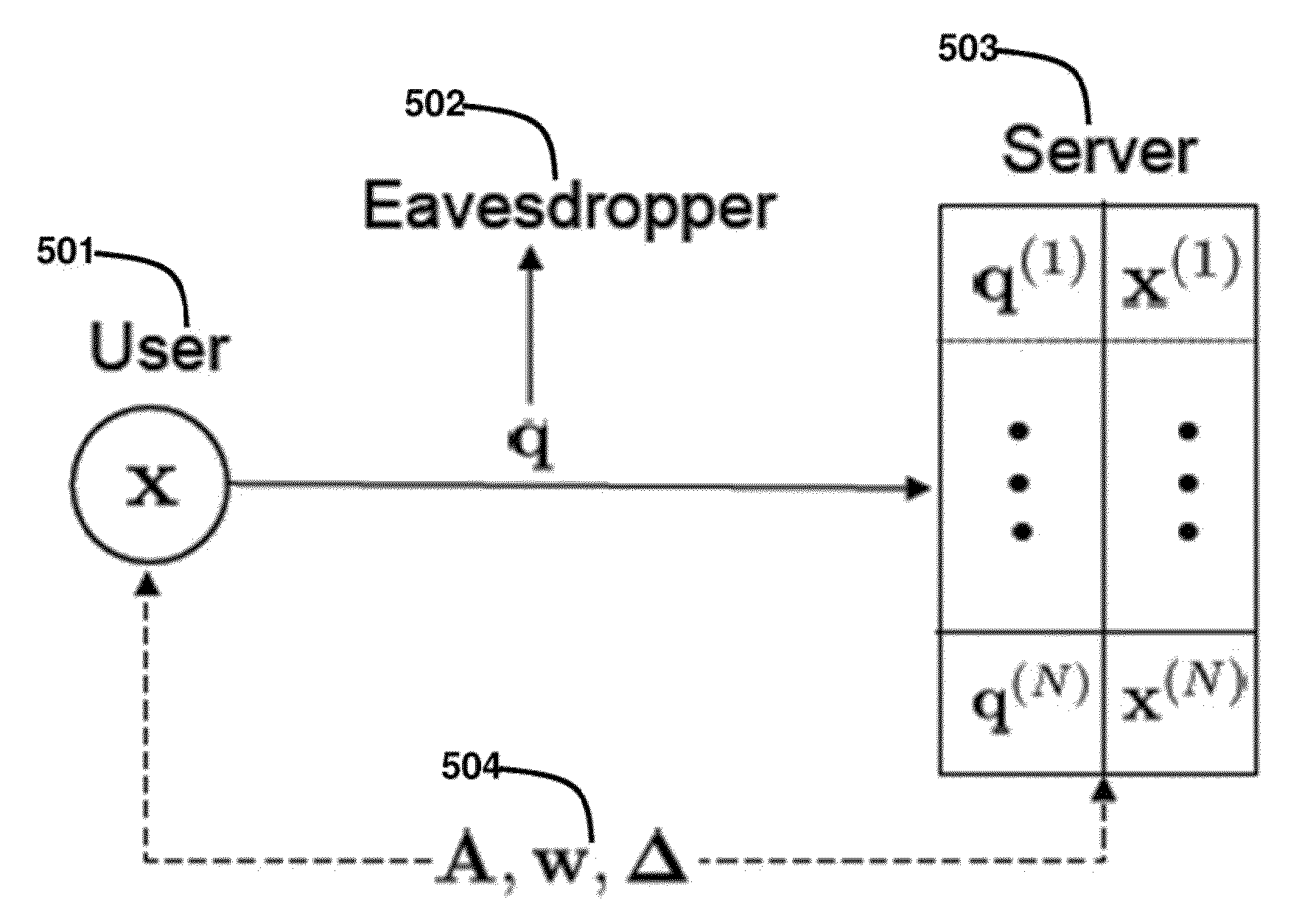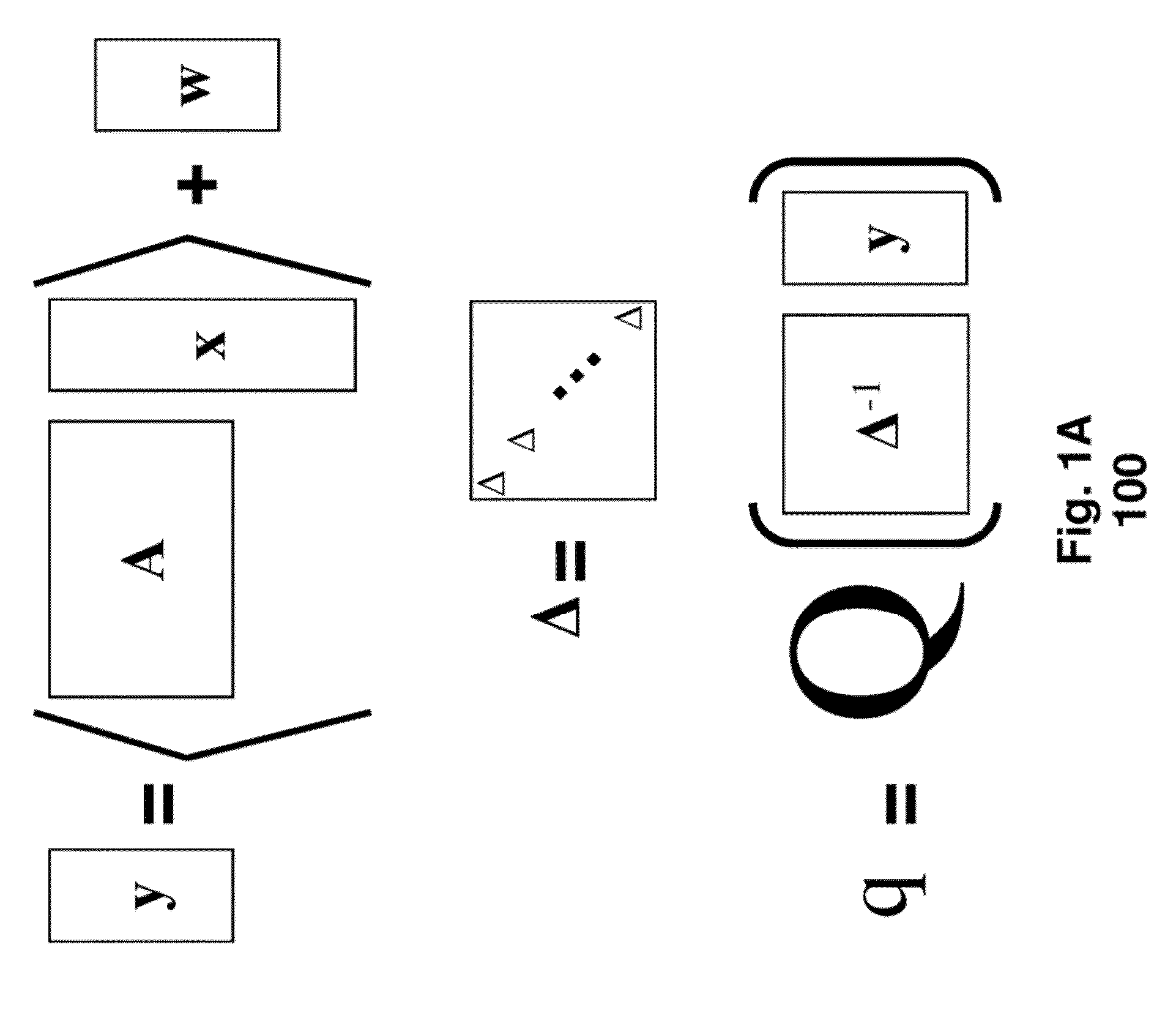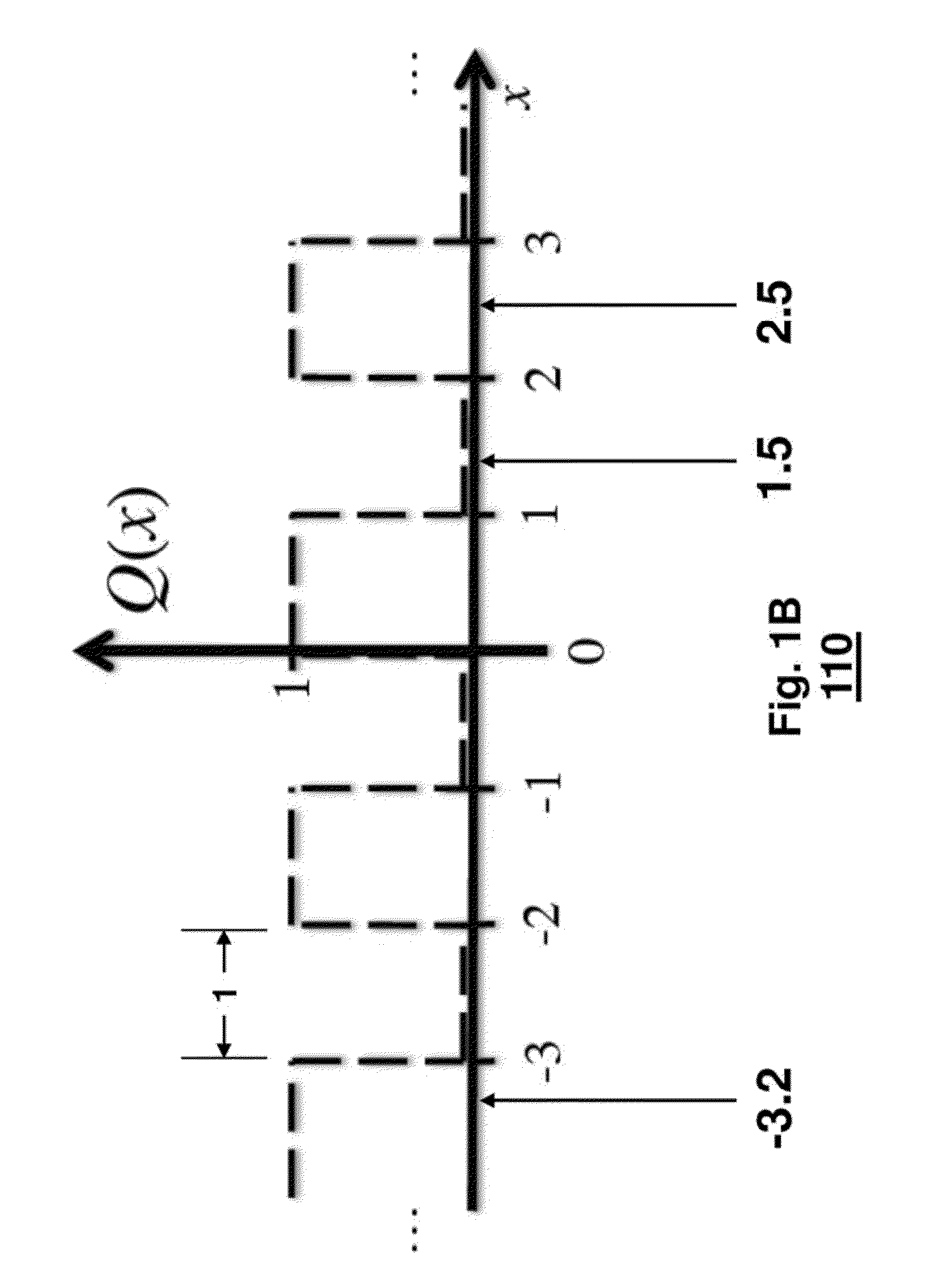Method for Privacy Preserving Hashing of Signals with Binary Embeddings
a technology of privacy preservation and hashing, applied in the field of hashing a signal, can solve the problems of increasing the difficulty of nns, prohibitive protocol overhead, and quadratic computational complexity of the method, and achieve the effect of efficient determination of their approximate distan
- Summary
- Abstract
- Description
- Claims
- Application Information
AI Technical Summary
Benefits of technology
Problems solved by technology
Method used
Image
Examples
Embodiment Construction
[0029]Universal Scalar Quantization
[0030]As shown schematically in FIG. 1A, universal scalar quantization 100 uses a quantizer, shown in FIG. 1B or 1C with disjoint quantization regions. For a K-dimensional signal x ∈K, we use a quantization process
ym=〈x,am〉+wm,(1)qm=Q(ymΔm),(2)
represented by
q=Q(Δ−1(Ax+w)), (3)
as shown in FIG. 1A, and where x, a is a vector inner product, Ax is matrix-vector multiplication, m=1, . . . , M are measurement indices, ym are unquantized (real) measurements, am are measurement vectors which are rows of the matrix A, Wm are additive dithers, Δm are sensitivity parameters, and the function Q(•) is the quantizer, with y ∈M, A ∈M×K, w ∈M, and Δ∈M×M are corresponding matrix representations. Here, Δ is a diagonal matrix with entries Δm, and the quantizer Q(•) is a scalar function, i.e., operates element-wise on input data or signals.
[0031]It is noted, the quantization, and any other steps of methods described herein can be performed in a processor connected ...
PUM
 Login to View More
Login to View More Abstract
Description
Claims
Application Information
 Login to View More
Login to View More - R&D
- Intellectual Property
- Life Sciences
- Materials
- Tech Scout
- Unparalleled Data Quality
- Higher Quality Content
- 60% Fewer Hallucinations
Browse by: Latest US Patents, China's latest patents, Technical Efficacy Thesaurus, Application Domain, Technology Topic, Popular Technical Reports.
© 2025 PatSnap. All rights reserved.Legal|Privacy policy|Modern Slavery Act Transparency Statement|Sitemap|About US| Contact US: help@patsnap.com



